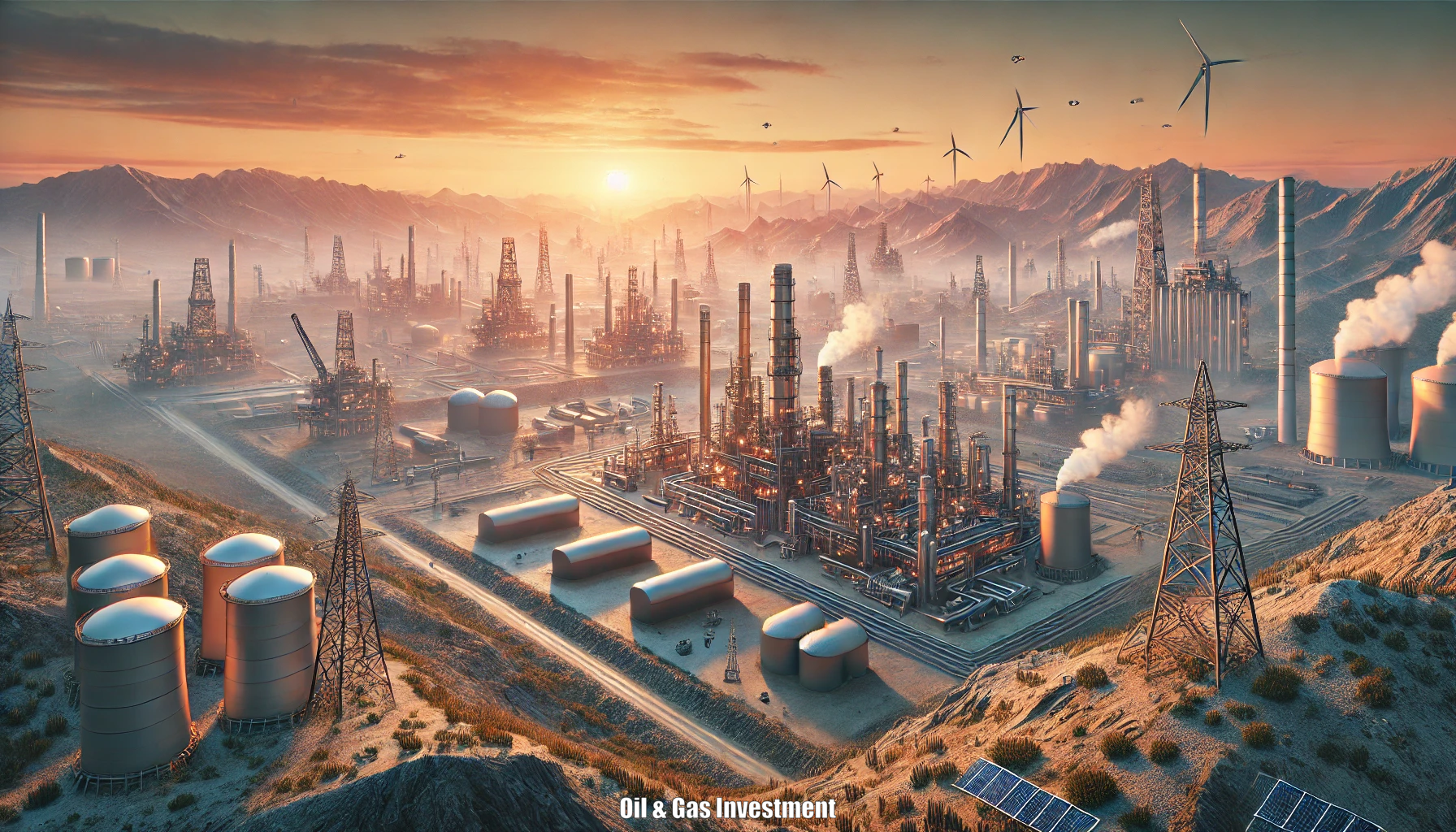
Oil & Gas Investment
Investing in oil and gas is a significant, often high-stakes component of the global financial landscape. Oil and gas investments span from direct participation in exploration and production (E&P) to indirect routes like exchange-traded funds (ETFs) and stocks in companies across the energy sector. Here’s an overview of the main considerations, types of investments, risks, and trends influencing this space.
Types of Oil & Gas InvestmentsDirect Investments in Oil & Gas Projects: Investors can participate directly in E&P projects, which involve high-risk, high-reward stakes in drilling or production ventures. This type of investment often comes through partnerships or joint ventures and requires significant capital.
Publicly Traded Stocks: Major oil companies (e.g., ExxonMobil, Chevron) are available for public investment, providing a liquid and relatively safer way to access the sector. Investors can buy shares in large companies (integrated oil companies), smaller, specialized E&P companies, or oilfield services firms (e.g., Schlumberger).
Exchange-Traded Funds (ETFs) and Mutual Funds: ETFs and mutual funds provide exposure to a diversified portfolio of oil and gas stocks. They offer a less risky entry into the market and are suitable for those seeking diversified energy exposure without directly holding oil assets.
Royalty Trusts: Some oil-producing properties are managed under a royalty trust structure, distributing profits to investors. These investments pay consistent dividends tied to production output but can be affected by depletion of resources over time.
Futures Contracts: Oil futures offer a way to speculate directly on oil prices but come with a high level of risk and complexity. These contracts are more common among institutional investors and experienced traders.
Oil Prices and Market Cycles: The price of oil and natural gas fluctuates based on supply and demand, geopolitics, economic cycles, and technological advances. Market cycles in energy can influence company profitability, stock prices, and investor returns significantly.
Geopolitical Risks: Because oil and gas are critical global commodities, geopolitical events (like conflicts in the Middle East or sanctions on specific countries) heavily impact the supply chain and prices.
Environmental Regulations and ESG Trends: With growing concerns around climate change, regulatory environments are becoming stricter, especially in developed countries. This affects operations, project approvals, and compliance costs. Additionally, ESG (Environmental, Social, and Governance) criteria have become central to many investment decisions, as investors are more mindful of sustainable energy and responsible investment practices.
Technological Advances: Improvements in drilling techniques, such as hydraulic fracturing and horizontal drilling, have unlocked previously inaccessible resources, increasing supply and affecting prices. Likewise, innovations in carbon capture or emission reduction technology influence the sector’s sustainability and long-term viability.
Shifts Toward Renewable Energy: Global efforts toward renewable energy adoption, energy efficiency, and carbon neutrality influence oil and gas investments. Governments and institutions are committing to reduce reliance on fossil fuels, which could impact oil demand and the sector's growth trajectory.
Commodity Price Volatility: Oil and gas prices are volatile and can shift rapidly due to supply disruptions, demand changes, or geopolitical tensions. This volatility can heavily impact the profitability of oil companies and, by extension, the return on investment.
Exploration and Operational Risks: Direct oil and gas exploration is inherently risky. Many wells drilled fail to produce commercial quantities, leading to substantial financial losses. Operational hazards, including accidents, environmental damage, and mechanical failures, also pose significant risks.
Regulatory Risks: Stricter environmental regulations may limit production, increase costs, or even lead to the shutdown of certain projects. Regulatory risks are especially prevalent in regions where governments are pushing for lower carbon emissions or imposing taxes on fossil fuels.
Depletion and Depreciation of Assets: Oil and gas assets deplete over time, meaning that any productive well will eventually run dry. This requires ongoing capital expenditure to explore new resources, which can strain cash flow for companies that do not diversify or innovate.
Income vs. Growth Investments: Investors need to consider whether they are seeking income (typically through dividends from established companies or royalty trusts) or growth (such as stocks in smaller E&P companies or service companies with high upside potential).
Diversification Across Energy Sources: Given the volatility and the push for renewables, many investors diversify by allocating some capital to renewables or ESG-compliant oil and gas companies. Diversifying within energy types can help mitigate risks.
Timing and Hedging Strategies: Some investors adopt timing strategies to buy oil and gas assets at low points in the commodity cycle. Others might use options and futures to hedge against commodity price changes, although these strategies require expertise and are more commonly employed by professional investors.
Energy Transition and Net-Zero Commitments: Many oil and gas companies are investing in renewable energy and setting net-zero emission targets to align with global climate goals. Investors are increasingly attracted to companies with clear strategies for adapting to a lower-carbon economy.
Increased Focus on Technology and Efficiency: The adoption of new technologies like AI-driven exploration, enhanced oil recovery, and digital oilfield solutions aims to improve efficiency, reduce costs, and minimize environmental impact. Companies investing in these areas may be better positioned for long-term resilience.
Global Demand Dynamics: Despite the move toward renewables, oil and gas are expected to remain critical to the global economy for the foreseeable future. Emerging markets continue to drive demand, though at a potentially slower rate due to global energy diversification.
Oil and gas investment remains a robust opportunity for those willing to navigate its risks, with unique potential for profit as well as substantial challenges. Investors must weigh commodity prices, regulatory factors, and evolving technologies. By understanding the intricacies and aligning investments with personal financial goals, those entering the sector can benefit from its cycles while contributing to an evolving energy landscape.





Mariah Carey
11 Nov 2024
I love the authenticity and durability of this company. Well recommended 😄😆